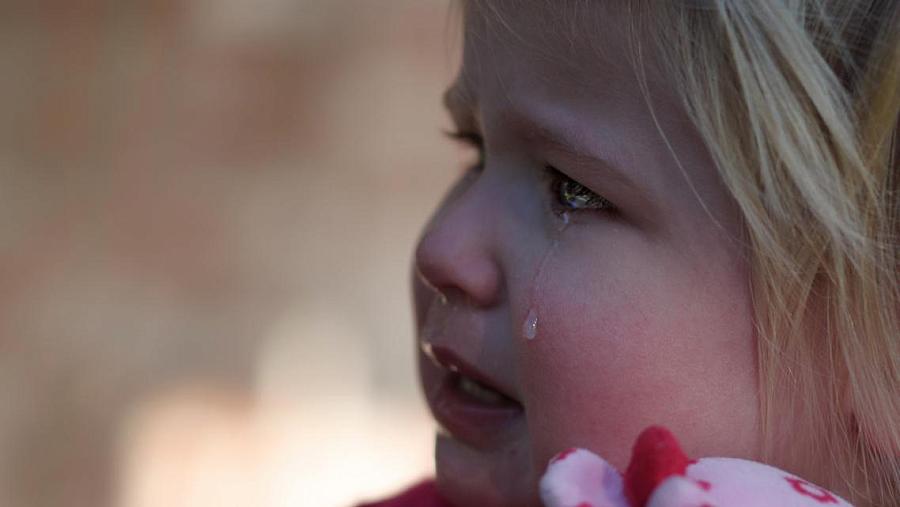Living in the Shadows: Researchers Trace Diseases Back to Childhood Adversity

So many aspects of our health seem impossible to measure, at first glance.
How much sleep you get and how much weight you gain. (Measured.)
Whether texting hurts your thumb. (Measured.)
And what about the effect that something bad you experience as a child has on your health later in life?
When New America Media’s Anthony Advincula first proposed to me that he wanted to explore that link for a piece in our Living in the Shadows series, I was doubtful. I have spent so much of my health reporting career focused on things that happen in the surgical suite and public health problems that span populations that I had not spent any time studying childhood trauma.
Advincula’s reporting for his story “Children Who Witness Parent's Immigration Arrest May Suffer Lifetime Health Consequences” opened up a new world to me. Here are some of things I learned.
The problem is defined. What constitutes an adverse childhood experience? Kids go through many things from cradle to high school graduation, right? Every moment of adversity can’t possibly have a permanently negative impact. The term has been in use since at least 1970, but the first major study in Adverse Childhood Experiences was published in 1998 in theAmerican Journal of Preventive Medicine. In that study, seven categories of adverse childhood experiences were considered: psychological, physical, or sexual abuse; violence against mother; or living with household members who were substance abusers, mentally ill or suicidal, or ever imprisoned. Jane Stevens, the editor of the website ACEsTooHigh, wrote a great piece about the study that appeared on ReportingonHealth.org:
The ACE Study – probably the most important public health study you never heard of – had its origins in an obesity clinic on a quiet street in San Diego. It was 1985, and Dr. Vincent Felitti was mystified. The physician, chief of Kaiser Permanente’s revolutionary Department of Preventive Medicine in San Diego, Calif., couldn’t figure out why, each year for the last five years, more than half of the people in his obesity clinic dropped out. … The mystery turned into a 25-year quest involving researchers from the Centers for Disease Control and Prevention and more than 17,000 members of Kaiser Permanente’s San Diego care program. It would reveal that adverse experiences in childhood were very common, even in the white middle-class, and that these experiences are linked to every major chronic illness and social problem that the United States grapples with – and spends billions of dollars on.
The research is deep. The U.S. Centers for Disease Control and Prevention tracks research on Adverse Childhood Experiences from the 1998 study forward. Since that time, researchers have explored links between childhood events and smoking, heart disease, unintended pregnancy, depression, sexually transmitted diseases, and a range of other health issues. A search in PubMed turns up 319 articles.
It’s all about the pathway. Who would think that there is a connection between a childhood trauma and liver disease as an adult? In article after article, researchers map the pathway between adverse childhood events and various diseases and disorders. In 2003, researchers studying the link between ACEs and liver disease explained in the JAMA Archives of Internal Medicine how child abuse, neglect or experiences with, for example, domestic violence, can start a chain of events that leads to unhealthy behaviors like risky sex, drug abuse, and alcohol abuse. That can then lead to liver injury. The authors wrote:
Multiple ACEs indicate a disordered social environment and stressful exposures that can negatively affect the developing brain and emotional and social well-being. Thus, as supported by findings of this analysis, the effects of childhood trauma on occurrence of liver disease may operate through resultant behaviors such as alcohol consumption, drug abuse, and sexual promiscuity, which, in turn, may be attempts to cope with unpleasant affective states and alterations in brain function that likely result from ACEs. …
Efforts to prevent liver disease (HBV, HCV, and alcohol-induced liver disease) have focused on biological and behavioral interventions, such as vaccination (which has proven to be highly effective), and prevention of alcohol and drug abuse. The findings of this study suggest that current liver disease prevention and intervention efforts may be improved by understanding that behaviors that increase the risk of common liver diseases often have their origins in the types of childhood stressors examined.
The evidence is far from settled on many of the links between adverse childhood events and later health effects, but the growing body of research is fascinating and worth exploring for anyone wondering how deep the roots of a health problem can go.
Photo by ellyn via Flickr.

